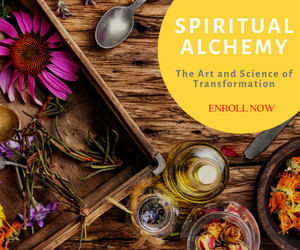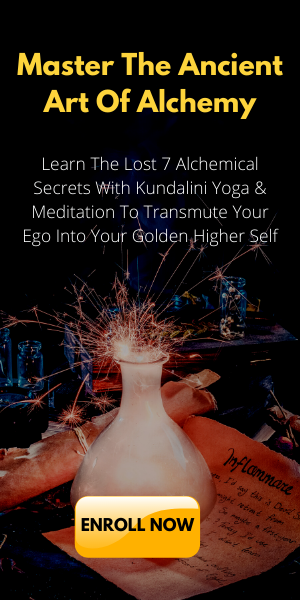Alchemy Journal Vol.2 No.1

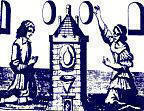
Jan/Feb 2001
CONTENTS
ARTICLES
The Alchemy in Spiritual Progress I
Alchemy: the Cosmological Yoga II
FEATURES
EDITORIAL
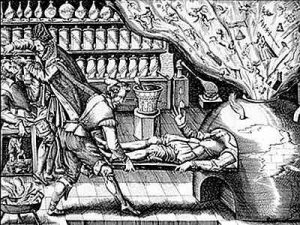
The Alchemy in Spiritual Progress
Part I: Calcination (by Nanci Shanderá, Ph.D.)
Burning with fever, drowning, being swept into a tornado, being challenged by the opposite sex, magically transforming into something or someone else, flying (without an airplane!), breathing underwater, being touched by an angel. Is this tonight’s television lineup? Is it another Harry Potter adventure? Or do these things sound strangely and personally familiar?
If so, it is because these are experiences common to those on the spiritual pathway and ones that can appear in both dream and waking realities. Each are good examples of the seven stages of alchemical transformation. Ancient alchemists put various metals and substances through rigorous procedures that were intended to turn the original material into gold. This art-science was a metaphor for what we typically experience in the stages of personal spiritual growth.
In this, the first of seven articles on the alchemical process, we will explore the foundational stage called Calcination. Dennis William Hauck, author of the profound work, The Emerald Tablet: Alchemy for Personal Transformation, and one of the world’s few practicing alchemists, defines the value of Calcination as “beneficial because [it exposes] deeper layers of our essence while rubbing away the false person.” This is certainly what most of us might think we want, but direct involvement in the process is often a frightening thing.
In Calcination, we come face to face with the ego’s resistances. It tries to protect us from the unknown by maintaining the status quo, the old way, the “safe” way, even if outdated. Calcination, over which the ego has no control, makes us feel like all we hold dear is threatened. It’s a death-like experience. We may even feel like we are being burned at the stake – the “stake” being the ego’s investment in keeping things “safe.” Calcination burns away what is no longer needed, including ego-based beliefs and ways of being. It initiates us into a long process of releasing illusion and making space for the true self to emerge. And this takes place when our “container” is cleared of old limitations.
In an alchemist’s laboratory, Calcination involves heating a substance until it is reduced to ashes. In personal transformation, we may experience it as deep depression or despair, hopelessness or defeat. These reactions prove how the ego controls our lives by enforcing the believe that there are only certain ways to be and anything outside those ways are dangerous. When the ego’s hold over us is “reduced to ashes,” we feel we are dying and there is nothing left to hold onto. The despair lies in our lack of experience in realms of expansiveness, those worlds being so much greater than our fears have allowed.
Please don’t misunderstand what I am saying about the ego. The ego serves a necessary purpose in helping us deal in our human world. But insecure and unhealthy egos create a chaos within us that prevents us from growing the way our Souls intend. Calcination is only the beginning of the creation of a healthy, productive, supportive ego structure. But first the ego must be “deflated” before it can be reconstructed in a way that sustains and maintains the guidance and desires of the Soul.
The ego snaps to attention when its boundaries are weakened and tries to protect us by overinflation. By creating emotional reactions of anger, outrage, shock, and making others wrong, the ego reestablishes its influence over how far we can open our hearts to the situation at hand. There is an old saying that it is far worse to take offense than to give it. That means that someone who makes an insulting comment can usually just walk away, while the recipient of the offending remark often stews for days, weeks – sometimes a lifetime – over the supposed affront. Once again, the unhealthy ego maintains its control by making us believe we have been wounded and deserve the retribution that usually never comes.
We can work most wisely with Calcination by surrendering to it, learning from it and allowing it to take us closer to our Soul’s desires by burning away the barriers and obstacles to living a whole and happy life. In my next article I’ll be discussing the second stage of alchemical transformation called “Dissolution” – where the ashes from Calcination are immersed in the waters of emotion and spirit. Until then, keep in mind that the hotter the fire, the greater the potential.
Nanci Shanderá, Ph.D. is a Mystery School teacher and spiritual counselor-dreamworker at EarthSpirit Center in Eagle Rock, California. This article is excerpted from her book in progress: Digging for Gold: the Art & Soul of Spiritual Experience. She can be reached at (323) 254-5458. Her website is www.EarthSpiritCenter.com.
In Calcination, we come face to face with the ego’s resistances. It tries to protect us from the unknown by maintaining the status quo, the old way, the “safe” way, even if outdated. Calcination, over which the ego has no control, makes us feel like all we hold dear is threatened.

Alchemy: the Cosmological Yoga
Part 2: Phases of the Work
(by Maurice Aniane)
Alchemy in most ancient civilizations is none other than the science of the sacrifice of terrestrial substances, the liturgy for transfiguring those crafts that deal with “inanimate” matter. We find it everywhere from archaic Mesopotamia to ancient China and in India throughout the ages. In these traditions, “mythological” in form, alchemy is not restricted to any particular place: if the Spirit is everywhere, obviously it is also in a stone; when the one and only light, that of Divine Intelligence, is manifest in the sun, in an eagle, and in honey, it is surprising that it is also manifest in gold, that every metal
The alchemical texts divide the work into three or four essential phases: “the work of blackening” (Nigredo or Melanosis), “the work of whitening” (Albedo or Leucosis), and finally “the work of reddening,” which alchemists originally separated into two complementary moments, that of gold (Citrinitas or Xantosis) and that of purple or transmutation of venom (Iosis)
The work of Blackening“The work of blackening” is considered the most difficult of the operations, in comparison with which the other stages seem “woman’s work” or “child’s play.” Through it man in fact separates himself from appearances and lets himself be drowned in the cosmic feminine nature, the full power of which he wishes to awaken and master. The work of blackening is thus at the same time a death, a marriage (or better, a parturition in reverse), and a descent into hell.
“A being frees himself from death through an agony which is undergone in a vast impression of anguish, and this is the Mercurial way.” The work of blackening, which prepares Mercury – the world’s subtle material — presents itself as a death to cosmic illusion in which the Mercurial waters are so to say “congealed.” This is why the texts call it “separation” or “division.” Man detaches himself from his separate existence; he extracts his vital force from mental and bodily attractions, from dream and from agitation. Painfully, quietly, he re-collects it in himself as still water. He brings Mercury back to its state of indeterminate possibility: this is the “return to materia prima.”
He does the same in the substances that he handles in his global perception of this: reversing the cosmogenic process of Genesis, he dissolves hardened earth into the unity of primordial water. Through discretio intellectualis (deductive powers), he distinguishes the presence of subtle forces and spiritual archetypes in the midst of the universe. He discovers the naturae discretae – the “Thing Itself,” the actual nature of things, that “latent inner basis” of which Geber speaks and which one could call the “quantity” of the World Soul that each thing has taken for itself. Then he perceives nature and his body as a cosmic interplay upon which the illusion of individuality is no longer projected. The discovery of this interplay is a marriage in which cosmic femininity prevails over masculine objectification. It is a liberating dissolution, which draws the virile force back from separative modes of action and of knowledge in order to bathe it in the baptismal water of universal life.
Just as in the cosmogenic process of generation the Soul is “coagulated” in the human mind, so in the process of regeneration that could be called “theogenic:” the mental must be reabsorbed in the potentiality of the Soul. Man enters the uterus of Woman and is there dissolved. But this return to potentiality begins with a return to darkness, a descent into hell. The chaos of “matter” is dark so long as its virtual content has not opened: it blossoms spontaneously into the poisonous flower of the world. Man has rejected the enchantment of this flower, and he must now take into himself the force that made it bloom so as to make possible its fulfillment in a new flower, pure and noble, which will again collect the divine fire.
The alchemist therefore descends into the depths of “Matter,” that is into the depthsof life. He proceeds to awaken the “inner Mercurial femininity” which lies asleep at the root of cosmic sexuality, so as to make it into a force of regeneration. In the desire, which gives birth to metals in the womb of the earth and to the child in the womb of a woman, a will for immortality is at work. But so long as this desire is oriented only toward the outside, immortality is fragmented in time, is objectified in the chain of generations. Outer birth so to say “syncopates” eternal birth-cuts it up. As Evola writes: “Heterogenesis replaces autogenesis.” The alchemist refuses to run away from this mystery: he enters into it. He comprehends it, that is, “takes into himself” the desire, which everywhere links Sulfur to Mercury; he obliges it to wish for God.
Visita Interiora Terrae Rectificando Occultum Lapidem (“Visit the interior of the earth; rectify what you find there, and you will discover the hidden stone.”): to describe the “descent into hell,” summed up in the word VITRIOL, alchemy has preserved some very ancient symbols: it speaks of a night journey below the sea in which the hero, often compared to Jonah, is swallowed by a monster. But the belly of Leviathan becomes a matrix: an egg forms around the imprisoned man; it is so extremely hot there that the hero loses all his hair; ejected by the monster he springs forth from the primordial sea, bald as a newborn babe. (The same alchemical process is portrayed in Stanley Kubrick’s 2001.)
Man is indeed reborn, and every detail of this symbolism is weighty with significance: the sea mingled with night is the dark materia, the humidity of Mercury. The monster is Ouroboros, the guardian of the latent energy, analogous to the serpent of Kundalini in Tantric doctrine. Finally, the heat is that of passion: the hero’s victory will lie in making it into a heat of “self-incubation,” a fervor of renewal; then the world is no longer a grave but a womb, fertilizing himself, becomes the egg from which he will be reborn.
In the “work of whitening,” the alchemist deploys, by “elevating” them, the potentialities of the materia prima whose force he has just captured (one could say he opens up their “sattvic” dimension). He in fact discovers them not in their state of sensory obscurity, but in their subtle luminosity, in the transparency of a purified humano-cosmic psychism, through which the light of the Intellect filters more and more. Whereas ordinary man knows the elements only in their “telluric” aspect (since he knows them only through his earthly senses-themselves made of earth), the alchemist directly perceives their “animic” substance; once the “spirits” of earth, water, air, and fire have been revealed to him, he understands the “language of the birds.” He “rectifies” these ambiguous “spirits,” reabsorbs them into their angelic prototypes, turns them toward God. Within him, the passions and their corresponding instincts “are made cosmic,” are pacified, and recover little by little their primordial innocence. Heaviness is melted in life; life is exalted and surpassed in pure adoration. Finally, cosmic “matter,” becomes transparent, is enraptured in the virginity of the Soul of the World, eternally intoxicated with God. The alchemist whose soul is the place of this exaltation sees nature from within, so to say in its immaculate conception. “Paradise is still on earth, but man is far from it so long as he has not regenerated himself.”
In the vegetal symbolism frequently employed by alchemy, the work of whitening corresponds to the bursting forth of spring: after black winter, all the colors are manifested in a profusion of flowers, but blend little by little into the white offering of a lily. In animal symbolism, while the work of blackening corresponds to the “flight of the raven,” the work of whitening begins with the unfolding of the “peacock’s tail” (pavonis) and is completed in the paradisal vision of a white swan sailing on a silver sea. Finally, in the mineral real, which is properly that of the alchemist, the work of whitening is a “baptism,” a “washing” which purifies the metallic substance and crystallizes it as silver, “our quicksilver, which is pure, subtle, luminous, clear, like spring water, transparent as crystal, and free from all blemish.” Thus the work of whitening has led the alchemist from the black, which, according to the analysis of F. Schuon, properly represents “non-color,” the root of all colored “forms,” to the white, which is “supra-color,” the synthesis of all forms and the promise of spiritual “transformation.”
In the perfect form of soul offered as a chalice, in the crystal flower where matter is in ecstasy, the Spirit suddenly bursts into flame. And gold appears, solar consciousness of the omnipresence, the aurea apprehensio. Let there be no mistake: the fire here spoken of in these texts is not (or is not only) one of the elements. It is the fire which is “super omnia elementa” and acts “in eis” –one of the tongues of the fire of the Pentecost. Xantosis–the appearance of the gold–which marks the beginning of the “red work,” implies a direct intervention of a transcendent power, a contact between cosmic life and its supraformal pole. Its own “rectified” energy gives birth to gold, the solar vision of unity. Then “philosophical incest” and the great hierogamy of the nuptiae chymicae are celebrated: the Sun is united with the Moon, the Sulfur “fixes” Mercury; in man, the Spirit restores life and makes it fruitful.
This is the ceremonial meeting of the Red King and the White Queen. The King is crowned in gold, clothed in purple; he holds a red lily in his hand. The Queen is crowned in silver and holds a white lily. Near her a white eagle has alighted, a symbol of Mercurial “sublimation” which is to be “fixed” by the now-beneficent force of Sulfur, symboled by the golden lion that walks close to the King. Alchemical realization in effect is essentially “flesh-making”; related to the sanctification of the craft and of the social authority, it does not escape from the world, but seeks to enlighten it: it is indeed a “royal” realization which demands “fidelity to the earth” and, after the ecstatic “ascent” of “the work of whitening,” the “descent” which makes man theSalvator macrocosmi.
The symbolism, which emphasizes the necessity of this “return”, is so profuse that it is bewildering. The vessel in which the work is accomplished must remain “hermetically” sealed, so that the subtle part of the compound, called the “angel,” cannot escape, but will be forced to condense anew and to descend again and again until the residue is transformed. Within the visible body there resides a spiritual body, which Boehme compares to an “oil” which must be set on fire so that it may become a “life of joy exalted by everything.” Alchemy emphasized al length and above all the heroic virility, which the work must arouse. The alchemist is a “solar hero” who must make the ios, the poison of life, into an elixir of longevity; he is the “lord of the serpent and of the mother,” he binds the hands of the virgin, that elusive demon, he transforms torrential waters into vivifying stone, he subordinates “nature which delights in itself” to “nature which is able to surpass itself.” Through the accomplishment, as we have said, of a higher cosmogony, he confers on cosmic sexuality the nobility of a liberating love: love of man for the woman whom he wishes to guide toward her perfection; of the craftsman for the matters whose secret beauty he releases; of the king for his people whom he supports in the performance of the “lesser mysteries,” that is, in the transmutation, through all human activity, of the cosmic order into a liturgy.
That is why it would be better to translate rubedo as “work in the purple” rather than “work in the red.” The purple results from the union of light and darkness, a union, which marks the victory of light. Purple is the royal color. It is also, according to Suhrawardi, the color of the wings of the archangel who presides over the fate of humanity, whenever a wise man discovers the sacredness of all things; the archangel has soiled one of his wings with shadow; the “Silent One,” by his presence alone, brings together the white wing with the black wing and unites them in the purple.
The Sun is projected onto Venus and transforms her into Mars, penetrating animal energy and turning it toward holy inner warfare. Mars in its turn fixes Mercury so as to extract Jupiter from it, Jupiter the King who dispenses justice under the tree of peace: the Spirit penetrates vegetal dream and transforms the nightmare of the world into a Dream of God. Through Jupiter, the Sun descends into the root force of the Water, of the Moon, and of Sex, in the night in which it is wrapped so that it may be received by creatures. Fecundity is transfigured: it no longer transmits anything but life. This is an eternalized autumn, the appearance of man-fructified. Finally, there arises a regenerated Saturn, henceforth the God of The Golden Age: lead is transformed into gold, the consciousness of the alchemist penetrates mineral sleep, in stones as well as bones; returning to the Kabbalistic teaching relating to the luz, to the “tiny bone” which “resists the fire,” and whose body by wakening from his sleep in death the God who sleeps in the stone of bones. “Such is the secret as it concerns chalk, the all-powerful limestone, the titanic element: it is the incorruptible body, the only useful one…. Whoever has found it triumphs over privation,” that is, over the absence of God. As the apokatastasis of heaviness, the transfiguration of Saturn is also the transfiguration of the Titans.
From now on the silent presence of the alchemist is a benediction on all beings. He is the secret king, the consciously central being who relates heaven and earth and ensures the good order of things. Unum ego sum et multi in me: He is a dead man bringing life. Dead to himself, become inexhaustible nourishment, in him there operates the mystery of “multiplication” and “increase.” He is the “panacea,” the “elixir of life.” “Drinkable gold.” From the Christic stone with which it is identified there flows a red and white tincture, which comforts the soul and the body. He is the phoenix from whose ashes a vast flock of golden birds take flight.
The way, which we have just described, draws natural energy into itself in order to transform it into fervor: this is the “humid way.” The alchemists speak in hidden terms–even more hidden than usually–of a rapid and dangerous way, the “dry way.” This uses a “contra-natural” fire analogous, in the cosmological real, to the Vedantic “Yoga of knowledge,” or, even better, to the “direct path” of Tantrism. It goes “directly” from the “ego” to the “Inner Man” without passing through the cosmic mediation, by slowly taking into itself the Soul of the World. It seems to start from a still more radical “descent into hell,” doubtless from an immediate becoming conscious of the formidable energy which is asleep in stones and bony systems; as in Tantrism immediately before the awakening of Kundalini, this consciousness takes on the appearance of a torrid heat linked to the affirmation “I AM” which is no longer individuated. This heat, that of “quicklime,” devours the psycho-vital objectivation of Mercury to allow only the certitude of gold to subsist.
The “dry way,” which no longer operates “with the slow fire of nature,” seems to have employed — in order to facilitate the traumas of “disidentification” which dislocate appearances — intoxicating potions, perhaps organic liquids mixed with alcohol like the “urine of a drunkard.” Urine, the symbolism of which is to be found in Tantric alchemy, designated above all for the alchemists, “the fire of lower nature,” or “Inferioris Naturae.”
Just as in the cosmogenic process of generation the Soul is “coagulated” in the human mind, so in the process of regeneration that could be called “theogenic:” the mental must be reabsorbed in the potentiality of the Soul. Man enters the uterus of Woman and is there dissolved.
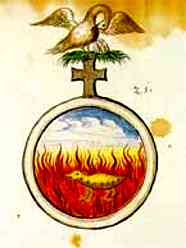
Alchemy of the Afterlife:
The Ka, the Ba, and the Kabbalah
(by Jay Weidner)
In the current use of our language, the words “soul” and “spirit” have essentially the same meaning. They are terms used to describe a mysterious state of awareness, or presence, that is the driving or animating force behind the externalized, concrete physical body that surrounds it. According to the teachings of the world’s major religions, this mystical soul, or spirit, somehow lives on after death. They tell us that just as we as human beings, living in a material body, grow and learn through linear time, so the soul, or spirit, grows in knowledge and experience through many successive incarnations. However, there is much evidence from the past that reveals that there may once have been a more complex meaning to these two terms, soul and spirit. There is a distinct possibility that they may not originally have meant the same thing at all. It may be, that somehow in the past, these two words became confused and that their separate meanings became lost in the well of history. In a way, this loss of understanding between these two words “soul” and “spirit” may lie at the root of much of our modern spiritual confusion. Perhaps it is time to re-imbue these terms with their true historical meanings once again.
In order to understand the subtleties of these two terms with greater clarity, let us take a look at the teachings of the rich and complex civilization of ancient Egypt. First of all, it is important to realize that the people of ancient Egypt lived a completely different type of existence than we do today. The ancient Egyptians lived each day, and each life, with a complete devotion to what today we would call the unseen world of soul and spirit that transcends our ordinary day-to-day existence. Time, for them, was not measured by the incessant ticking of the clock, or the hope of a secure future, but was built on a much larger concept, which included not only their time on Earth, but the afterlife as well. In fact, their entire culture, including their incredible edifices and their sacred science, was all constructed around a complete understanding of the afterlife and what happens to that animating force of human consciousness at the moment of death.
These ancient sacred scientists found that there is a great moment of confusion at the instant when the consciousness separates from the body. Examining this confused state, they realized that there was a division that occurred at this crucial moment. Consciousness became divided into two separate states, or entities. They called each of these states by a different name.
The first state in this division of consciousness was called the “Ba”. This is the immortal state of existence. This is the aspect of consciousness that reincarnates. The Ba separates from consciousness at the moment of death and goes back into the well of souls to be reborn again. In our current lexicon, the words “soul” and “spirit” mean, essentially the same thing. But looking at it more closely, it can be seen that the word “soul” is actually referencing the BA The BA, or the soul, never dies, it reincarnates and continues its sacred pilgrimage towards total illumination. It has been described in religious literature as that spark of divinity that resides within us all, the aspect of our multidimensional being that inspires us to overcome our animal nature, to move beyond the cravings of the small self-centered ego so as to experience an interconnectedness with the entire universal reality. Called the “breath of life”, it is that unseen force, or essence, that travels throughout eternity from body to body on its great journey of experience, purification and enlightenment.
In the hieroglyphs or symbolic language of Egypt, the BA is written sometimes as a winged human head and sometimes as a human-faced bird. It is the part of us that is conscious of leaving the earth at death and therefore is depicted as a winged human or a human bird. This bird motif will be more properly understood in part II of this article. Suffice to say for now that bird symbol for the BA represents the force that can free itself from the Tree of Life and soar into the cosmos, liberated from gravity and the material realm.
The second aspect of this great separation at death was named the “Ka”. The kA is the part of the human consciousness that remains here on Earth, and is represented in the hieroglyphs as two up stretched arms in front of a horizon. It is perceived as the “ghost” or psychic residue of the previous conscious being. It is the spirit. It is the part of us that has a connection with the place that the physical body lived, with the objects it possessed, with the people that it knew. It literally haunts the place of its life forever. And so do all of the spirits that existed in a place. The kA then is the aspect of consciousness that is left when the BA, or animating force, departs the physical body. It is the shadow, or remaining psychic imprint, of soul consciousness, or the “spirit” which haunts a place, that occupies illusory heavens and hells, that may relive its own human life over and over for eternity. Therefore, in this light it can be seen that the word “spirit” is actually referencing the “kA
It was through their knowledge and understanding of the consanguinity between the BA and the kA that the Egyptians realized the science of the afterlife and the great relationship that exists between soul and spirit, blood and soil, between our possessions and our spirit, between our ancestors and our own personal being.
Many philosophies, religions and spiritual teachings have spoken clearly about the BA, including Hinduism, Buddhism and many indigenous traditions. But the awareness and understanding of the kA has fallen by the wayside. Lost in superstition and legend, the great Egyptian knowledge of the afterlife has become forfeited in our modern world. Yet, there are many these days who seek deeper knowledge of the mystic realms. It is important to once again explore the great science of Egypt, the science of the afterlife, so that we contemporary seekers can have the opportunity to view the meaning and import of our lives on earth from a larger perspective.
In our exploration of this fascinating subject, it is interesting to note that recently, many Hollywood films have begun to focus upon this mysterious aspect of human experience, or the “Ka” state. Perhaps our great cultural confusion concerning the kA is at the root of these phenomena. In fact, these films are using the mysterious state of the kA as vital subject matter in their story lines. For example, The Sixth Sense,which is one of the films nominated by the academy in the year 2000 as Best Picture, is not only about a boy who can see the spirits in their kA state occupying the world around him, but also about a man who is living through the very beginning of his own kA existence. This man (played by Bruce Willis) spends much of the picture confused and bewildered by what he sees around him, that is, until he realizes that he is not alive, that he is in his kA state. No longer alive in terms of physical reality, as a disembodied spirit, he is playing out a dreamlike scenario in order to realize – and possibly correct — the mistakes he made during his life. Traveling through this illusory, but seemingly real drama, his kA, or psychic imprint from this previous life is presented with the opportunity to learn from these mistakes. In many spiritual traditions these illusory landscapes are referred to as heavens and hells, which present the kA or disembodied spirit with scenarios which allow it to realize and purify its sins or reward it for a “good life.”
The movie Ghost was also about the kA state. Remember the demon spirit who haunted the underground New York subway system? This mad ghost, this haunted kA, was caught there in the subway system possibly forever. One gets the idea that this mad demon committed suicide there in the subway. Now he is condemned to reliving the incident over and over as his kA is driven insane. In addition, like Bruce Willis’ character in The Sixth Sense, the hero in Ghost, Patrick Swayze’s kA, is presented with the opportunity to “make things right”.
At the end of the movie American Beauty, another Best Picture nomination this year, the Kevin Spacey character has just died. As the camera pulls away from his neighborhood, we hear his voice on the soundtrack. It says: “You know they say that when you die you live your entire life over again. Well, what they didn’t tell you is that you live your entire life again – but that you do it for eternity. But don’t worry, you’ll find out”. This is about as apt a description of the basic kA state as has ever been spoken in popular culture.
In the film What Dreams May Come, the Robin Williams character dies and goes to a place that looks just like the beautiful paintings that he loved while he was alive. The film reveals that the character has “created” his own eternity in the kA state. Conversely, his wife later commits suicide and is banished to a hell. What they are telling you in this film is that the dreamlike, hallucinatory experience of your kA is based upon your own belief system and the manner in which you lived your life. This also is a clear description of how the ancients looked at the kA aspect of the separation of consciousness at death. Whatever life you lived here in this existence was repeated – perhaps forever – in the kA state after the moment of death.
In these films, the Hollywood mavens have hit a nerve in the psyches of contemporary audiences. The celluloid dreams and illusions that they are creating for the masses can be compared to the numerous types of experiences that the kA may undergo. Is it possible that, by subliminally implanting these scenarios into our collective psyches, they are both teaching us about the kA state and subtly influencing its journey?
Let us return to the beliefs and practices of the ancient Egyptians and examine this ephemeral kA state more closely. According to their doctrines, there are certain keys to understanding the various aspects of the kA state. They believed that the formation of the kA is deeply connected to the shaping, experience and remnants of the physical form. The kA includes all of the genetic material and characteristics of our parents and ancestors. The Egyptians knew that residue from all of one’s ancestors were sharing in the make-up of one’s own personal kA So reverence for one’s ancestors, and remembering their names, was considered essential to their practices. They believed that our ancestor’s kA lives on in all of us. Their genes, successfully passed down through the many generations, live on in each being born of their creation. All of our ancestors are gazing through our eyes at this very moment. The ancients believed that by just saying their names we can call them forth, with all of their wisdom and knowledge.
They also believed that whatever objects one possesses in this life hold a part of one’s kA state as long as these objects exist. Imbued with the BA essence, which once flowed through the physical form, they retain an energetic imprint of this force. This is why psychics can hold a key, an article of clothing, or other type of object in their hand and perceive many things concerning the life experience of the person who once possessed these objects. These psychics have the capacity to pick up the traces of this kA energy. Because of this factor, the ancients decided, wisely, to own as few objects as possible. They did this because they wanted to preserve their kA state in a way that they could control it after death. It was extremely important not to have their kA spread all over the place. Therefore, an essential part of their practices involved the proper preservation of the kA.
In order to accomplish this task, there were important procedures that had to be followed in the life of the person if their kA and their BA were to remain unbroken at death. When they died, their few kA objects would be gathered together by family and friends and placed in their grave, or tomb, with the body. The preservation of the body through the practice of mummification was also part of this process. The Egyptians believed that even the body itself held the kA As long as the decay of the body could be slowed the kA would stay more whole.
When grave robbers, and western treasure hunters, broke into many of the ancient Egyptian tombs they found exactly what has been described above. They found the kA objects that were the possessions of the person who was interred in the tomb. They also found the mummified remains of the person’s body. There was usually a curse put over the door to the tomb. This curse brought damnation on anyone who would disturb the tomb. The non-disturbance of the kA objects, and kA body, were crucial aspects of the Egyptian science of the afterlife. Indeed, as will be revealed, the preservation of the kA, and the kA objects, in an undisturbed state was the doorway towards a kind of immortality. The formula went like this: in order to stop the BA from falling back into a state of reincarnation; and to stop the kA from constantly reliving a fantasy based on the consciousness of the life lived previously, it was necessary to preserve the kA in an undisturbed state. This would “ground” the BA and prevent it from escaping back into the realms of reincarnation. Since the ethereal link between the BA and the kA had not severed, this allowed the BA to become an ethereal shamanic traveler into the many realms and dimensions that invisibly surround us. This includes, but is not limited to, planets, stars and even galaxies.
Certain rituals were designed to keep the kA inside the tomb and to make sure that it would not be released back into the world to become a phantom or ghost. If one were successful in accomplishing this then the BA would also be freed from the realm of incarnation. The BA would then be able to pass into many different realms of the afterlife at will. In Egyptian mythology it is fairly clear that when this state was achieved it was possible for the BA to actually become a “light body”, or a star in the heavens. Through the careful procedures of this science it would allow the division of consciousness at death to be halted, thereby gaining a certain degree of immortality.
As we have seen, the science of the ancient Egyptians was a science of the immortality of consciousness itself. It was a science of the afterlife that promised to preserve both the kA and the BA It contained practices and procedures that would allow the kA state to not fall into the path of repeated fantasy states consisting of eternally reliving the memories of the previous existence. In fact, the ancient Egyptians – and research has shown that many other indigenous peoples also held these beliefs – created a system that could change this strange destiny at death. In fact, the essential transformational practices of Tibetan tantra, including those of the Tibetan Book of the Dead, were created to lead the individual practitioner towards these same ends.
In Egypt, this sacred science of the afterlife was focused upon two things. One was the halting of the reincarnation process of the BA The second was the termination of the fantastic, dream-like states of the kA This science attempted, it appears, to reunite the essence of the kA and the BA at the moment of death in a way so that they would not separate.
But there is more. This nearly immortal being also becomes the preserver and cultivator of the earthly spiritual realm. He or she becomes a being that now has a capacity to influence events and situations here on Earth, to assist in bringing all beings into a higher spiritual awareness.
In order accomplish this sacred task, the manner in which an individual lived his or her life was of vital importance. Thus, the ancient Egyptians believed that every interaction, judgment and impulse that occurred in one’s life had a small part of one’s kA involved. Since they believed that existence is eternal and that development continues even after death of the body, they knew that whatever happened here would mirror itself in the afterlife. This is a concept very close to the eastern philosophy of karma. And so, the Egyptians were very careful with whom they interacted, became friends with, had sex, and made business deals. The point was to live lives of virtue and integrity, not allowing their own personal kA to get stained with negative experiences in this life. Hours of quiet meditation and contemplation upon the fundamental meaning of existence and relationship to the world around them would seem to have been the pattern of their lives. For it was understood that this type of lifestyle would lead to the development and genuine experience of the higher spiritual attributes of truth, insight, clarity, wisdom and compassion.
The Egyptians believed that human beings were the “seeds” for stars. It was believed that human beings were walking, talking, thinking, conscious “starstuff”. And indeed that is what we are. Our bodies are made from interstellar dust, which is the remains of ancient dead stars, cosmic debris and galactic particles. Throughout the course of our history on this planet, dust and water miraculously created animated star matter.
Therefore, the navigation of the many realms in the after life was another essential component of the rituals and practices of the ancient Egyptian priests/scientists. They discovered that even when all of the proper care and rituals were performed, there was still much confusion at the moment of death on the part of the separated and disconnected kA and BA The BA, freed from the cycle of incarnation, still did not know the way through the many faceted, and difficult to understand, realms of the after life. The astral playground was too complex and confusing to comprehend without some kind of map, without some kind of guide that one could learn during their conscious existence as a human being.
Using meditations, shamanic substances and sacred rituals, these ancient priests/scientists traveled the shamanic pathways that exist in the higher realms that surround us like an invisible net. Achieving a state of what is now called a “near death experience”, these ancient shamans pierced through the misty curtain of the astral realm. They began to create a hygiene, or a proper set of rituals, that allowed them to navigate the infinite worlds of the after life.
As these many shamanic voyages were catalogued and compared, a system began to be built that would allow the shaman, and the person experiencing death, to better understand what was happening and where to go in the afterlife. They called their map the “Tree of Life”. The purpose of this tree was to help the kA and BA, now united at death, to be able to travel the astral highways. The profound significance this symbolic map will be explored in Part II of this article.
In addition, this science may be what is behind the many ancient “ley” lines that mark the surface of our planet. These lines have been recorded all over the planet. From England and Ireland, to the Steppes. Ley lines have been found running over the tops of 18000-foot mountains in the Andes. They are usually perfectly straight. Their significance has been unknown for many years. It has been speculated that they are runways for UFOs or that they are ancient highways. According to the work of Paul Devereuax, they are actually ancient shamanic pathways. These are shamanic spirit paths that allow fully realized soul-spirits to take off and land, so to speak, into the other realms. This is why the shamans of old always were buried on the ley lines. In this way, their kA was preserved in a sacred spot. In Europe, the shamanic tradition called for the kings and priests to be buried under flowing creeks and rivers. They would damn the river and create a water by-pass. Then they would bury the body in the flow of the water and release the flow again. This preserved the body so that it would not be found and it was preserved in a natural “ley” line, which is what rivers and streams are in this tradition. Like Indra’s net from the Hindu tradition, the ley lines were reflected in the night sky as the paths between the many stars. For those who could read the sacred language that linked the microcosm with the macrocosm, the earth with the larger universe, outcroppings of rock, groves of trees, creeks and streams all became the earthly representations of the stars and planets. For these adepts, when one walked the earth they were not only tracing the psychic waves and patterns of the land, but also transcending this realm and walking among the stars. The aborigines in Australia believed that the stones sang the song of the stars themselves. If one listened closely they could hear the music of the spheres.
The planet we live and walk upon is filled with the numinous residue of countless amounts of kA spirit. The dirt itself is made up of the dead bodies of plants, animals and humans. Each has endowed the soil with its kA. The food we eat is grown in dirt that contains the remains of numerous life forms that existed in the past. Each retains a charge in that soil, and it too is added to the food we eat and the water we drink. This is the reason why in some Tibetan Buddhist practices, mantras are spoken prior to the consumption of meat. It is believed that if the consumer is a practitioner on the path to enlightenment, that by eating the flesh of that animal with total awareness he/she is creating a cause for its future enlightenment. From a spiritual perspective, the awakened practitioner has linked his own essence with the kA of the animal thus planting the seed of its own spiritual awakening.
This endowment of kA essence into the earth is also the reason for the age-old linking between blood and soil. Even when genocide is committed, the kA essences of the people murdered still inhabit the land that they once occupied.
From this perspective, the Native Americans still rule the spiritual landscape of the United States. The more that we dig up the earth and destroy the landscape the more we destroy not only the land itself, but also the many kA spirits that inhabit that landscape. The Hollywood film Poltergeist presents us with a clear picture of this type of ignorant behavior. As this kA spirit escapes and is disturbed, so shall our own spiritual future be disturbed and destroyed. The digging up of ancient burial grounds, the opening of the sacred tombs of our ancestors and the destruction of the ley line system will eventually contribute to a complete lack of spiritual enlightenment.
As we increasingly lose contact with our spiritual heritage and become trapped in the seductive prison of the concrete material world, our lives become dominated by the dark passions of greed, arrogance, lust, anger, and violence. Blind to the numinous world of light, harmony and beauty, we sacrifice our sacred knowledge of the divine realms of soul and spirit, of the kA and the BA. As we trade in our spiritual values for material gain, so shall we all become the confused and angry ghosts that haunt the New York subway system. Lack of respect for our planet, for the origin and custodianship of our kA, is also a lack of disrespect for our own beings in eternity. We are creating a nightmare hell realm of our own design. In this realm all of our kA will be deserted and abandoned, repeating meaningless lives for eternity.
So, we see that the words “soul” and “spirit” have very different meanings. One is the BA, the everlasting imprint of God that incarnates and reincarnates. The other is the kA, the material and psychic manifestation of that soul here on Earth. Like a footprint left in the sand, or the crumbling temples and monuments of our ancestors, this kA leaves only an impression of its soul, or BA, essence behind. In these times of shifting values, of battles between the forces of darkness and light, it is up to us to seek out, acknowledge and learn from the wisdom of our ancestors so that we may once more, enter and navigate the divine realms and take our immortal place among the stars.
Jay Weidner is a film maker, lecturer and writer. He is the co-author (with Vincent Bridges) of A Monument to the End of Time: Alchemy, Fulcanelli and the Great Cross. Website: www.Sacredmysteries.com. See the review of his book below in the New Releases section.
That is why it would be better to translate rubedo as “work in the purple” rather than “work in the red.” The purple results from the union of light and darkness, a union, which marks the victory of light. Purple is the royal color.
These ancient sacred scientists found that there is a great moment of confusion at the instant when the consciousness separates from the body. Examining this confused state, they realized that there was a division that occurred at this crucial moment. Consciousness became divided into two separate states, or entities.
In the film What Dreams May Come, the Robin Williams character dies and goes to a place that looks just like the beautiful paintings that he loved while he was alive. The film reveals that the character has “created” his own eternity in the kA state. Conversely, his wife later commits suicide and is banished to a hell. What they are telling you in this film is that the dreamlike, hallucinatory experience of your kA is based upon your own belief system and the manner in which you lived your life
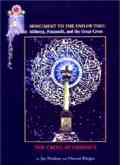
FEATURES
New Releases
A Monument to the End of Time: Alchemy, Fulcanelli, and the Great Cross
by Jay Weidner and Vincent Bridges
Click on book cover to order this book.
In Tibet they call it the “Shambala Effect;” in ancient Mayan Mexico they said that it was the end of their long-count calendar; in ancient Egypt it was referred to as “Zep Tepi” or the “first time;” and in Christian alchemical Europe it was called “Judgment Day.” Four different cultures in four different locations on earth have built a religious mythology concerning the time period that we are now living. Even French alchemist Nostredamus referred to this time in his famous prophetic quatrains. Why do these diverse cultures from all over the planet refer to the time that we are currently living in as the single most important time period of all?
Two researchers discovered the answers to these questions and many more. Jay Weidner and Vincent Bridges new book A Monument to the End of Time Alchemy, Fulcanelli and the Great Cross reveals that the great secret of Christianity, Islam and mystical Judaism is the secret of the end of the world. Accidentally stumbling upon the great secret of history, Weidner and Bridges bring a multidisciplinary scholarly approach to the most important subject of our times.
The book delves deeply into the mystery of a 20th-century secretive alchemist by the name of Fulcanelli and his strange, obscure book called Mystery of the Cathedrals. The authors prove that the elusive Fulcanelli is in reality a member of a secret group of spiritual masters called the “Keepers of the Light.”. These masters appear to be guiding the destiny of humanity towards the final culmination of history in the year 2012. Using a mysterious cross in the town of Hendaye, France, on the border with Spain, as their guide the authors unveil the stunning truth: we are living in the end times. This cross was first brought the world’s attention through Fulcanelli and his book. The two authors interpret this most important monument in their book. As the mystery deepened they realized that this mysterious cross in Hendaye, France, was revealing the facts that would bring about the end of the world. The cross, also, amazingly, tells the exact time that the end of the world begins. It describes, accurately, the mechanism of the celestial disaster that brings on the last days of humanity.
Perhaps more astonishing is the Cross at Hendaye was constructed in the late 1600s. The authors prove that this cross as made by the “Keepers of the Light” to bring us the message about the end of time and the end of the world.
Laboratory Notes
A 2- or 3-liter Alembic (by Rubellus Petrinus)
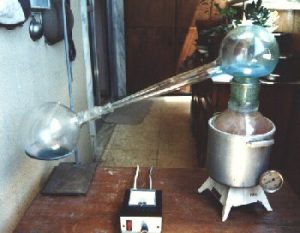
The alembic is the glassware that is most important in either the spagyrical or alchemical works. Without this apparatus, you cannot make the spirits that are so important in our Art. Today, it is not easy to find a master glassmaker that can make an alembic just as the ones used by our old Masters (see http://www.AlchemyLab.com/classifieds.htm for a few glassmakers). In certain cases you can use a copper alembic, but when it is necessary to make a distillation of acid spirits, the alembic will have to be of good Pyrex glass. A cucurbit is a balloon of round or conic bottom (known as an Erlenmeyer) of 2 or 3 liter. The helm is a little more difficult to do. The master glassmaker uses a Pyrex glass spherical balloon and heats it near the lap and pushes it inside creating a concavity where the condensed liquids are deposited. For a 3-litre cucurbit, the balloon of the helm should be 1.5 liter. Then he will adapt a conic tube (horn) of 25 cm of length in the concavity of the helm so that the condensed liquids deposited in that concavity can be drained to the exterior. At the tip of that conic tube he makes a polished male fitting. At the lap or neck of the helm, a polished male joint is adapted and in the cucurbit a female joint. The receiving vase will be made of a 2 liter spherical balloon with a short lap and a female polished joint. The receiving balloon will have in its belly an air hole, without which the alembic would explode because of the excess pressure inside.
Rubellus Petrinus is a Portuguese alchemist who offers an excellent multi-language website devoted to the operative and speculative aspects of alchemy at http://planeta.clix.pt/petrinus/alchemy-e.htm.)
Alchemy Lectures and Workshops
In Search of the Emerald Tablet
The deadline is approaching to join Dennis William Hauck’s metaphysical expedition to Egypt during the millennial equinox (March 15-27, 2001). Take part in private meditations inside the King’s Chamber at Cheops and other sacred locations. Ancient alchemical ceremonies revealed for the first time, as you progress through sacred places of initiation along the Nile River. Participate in ancient ceremonies and transformative rituals at the pyramids of Giza, the Sphinx, the Valley of Kings, and the magnificent temples of Chephren, Aswan, Kom Ombu, Edfu, Luxor (Thebes), Esna, Isis, Dendera, Der el Bahari, Karnak, Sakkara, Unas, and Scrapeum. Join an excursion to the Temple of Amen at Siwa, where excavations are now underway. For more information, call tollfree (800) 231-9811 or email [email protected].
EDITORIAL
From the Editor (Dennis William Hauck)
I am happy to announce that the Alchemy Journal is now a bimonthly magazine. We have also received a lot of positive feedback in our efforts to create a serious periodical devoted to alchemy that covers all aspects of this ancient discipline. If you would like to write an article or volunteer your time to assist us, please feel free to contact me. My special thanks to Assistant Editor Tiffany-Nicole Hill for persevering through this period of transition. I am presently working on two new books (Alchemy for YOU! and Egyptian Alchemy: Creation of the Golden Body) plus preparing for another trip to Egypt, so I truly appreciate the help. It seems appropriate at this time to reiterate the purpose of this journal, as I stated it in the first issue: You will find in these pages an eclectic blend of material, both scholarly and personal, logical and emotional, practical and spiritual. Just keep in mind that this publication seeks to stay alive, to become and remain a living thing in pursuit of a genuine experience of what alchemy is, where it came from, and how it works in the world today. If some of the things in this journal upset you or set you afire with inspiration, then we have succeeded in our major goal, which is setting you on the path of alchemical perfection and transformation.
From Our Readers
I recently experimented with D.M.T that was given to me in India by a friend. I forgot the dose and ended up taking nearly double the recommended amount. All sight, sound, and reality merged almost instantly and my entire being and that of the whole universe was sucked into a vortex that was suddenly outside of space and time as our intellectual minds conceive of it. I have studied mysticism and traveled for many years in India studying. The impression I got was that our whole reality is a “conspiracy” perpetrated by some kind of “outside” intelligence in order to achieve some goal unknown to us. I think our ego identity is an existential virus that our higher consciousness is unaffected by. But on the everyday level, this hinders us from awareness of one another and the earth. It makes us pursue selfish aims. In other words, when we live selfishly our intellects are being used to calculate or achieve something that theses beings want! That is how separate this false way of thinking seems when viewed from higher consciousness. These “beings” live in a sphere of pure consciousness, in a dimension unaffected by ours. The few human consciousnesses that have made it to the “arena” where they play their universal game were humored like children or blinded to what is there, so the beings’ agenda can continue. The solution? We have to go back to the earth — our source — and achieve magic through higher awareness. This is the only resistance to having our intellects “farmed” from another dimension. Awareness focuses us on our power, which is the same power that exists in the physical universe and is the only antidote to what is going on “behind our backs.” Our ancient mother will receive us. Earth will protect us — if we keep intact the ancient wisdom formulated by those who knew. – [email protected]
Submissions
Please submit your articles on any aspect of alchemy. We are looking for biographies, historical articles, practical laboratory work, spagyric recipes, philosophical pieces, experiences in personal transformation, spiritual insights, Hermeticism, Gnosticism, book reviews, film and video reviews, website reviews, artwork, etc. Please submit your material or queries to the Alchemy Journal, P.O. Box 22201, Sacramento, CA 95822-0201. You may also submit materials via email to the Editorial Dept. or to the Assistant Editor, Tiffany-Nicole Hill at [email protected].
Acknowledgements
“Alchemy: The Cosmological Yoga” by Maurice Aniane is from an article of the same name that first appeared in Material for Thought magazine, San Francisco,fornia in Spring 1976.
Subscriptions
The Alchemy Journal is posted bimonthly at the Alchemy Lab website on the journal archives page at www.AlchemyLab.com/journal.htm. To subscribe to the journal, send a blank email to [email protected].

